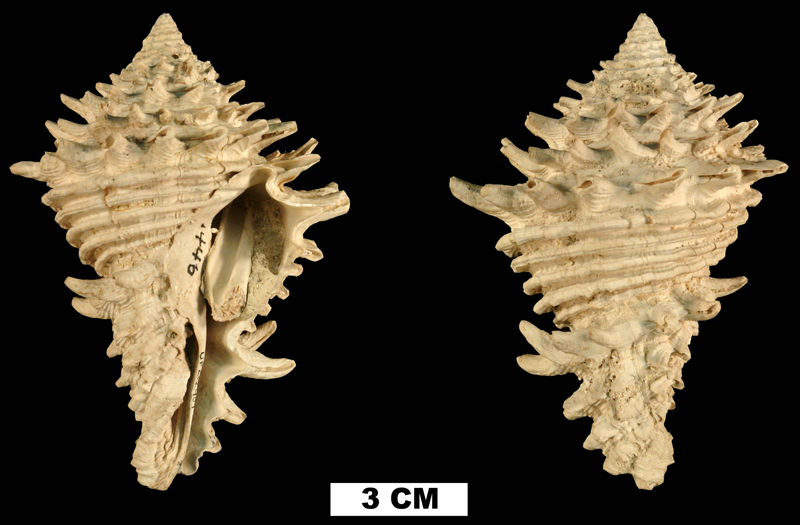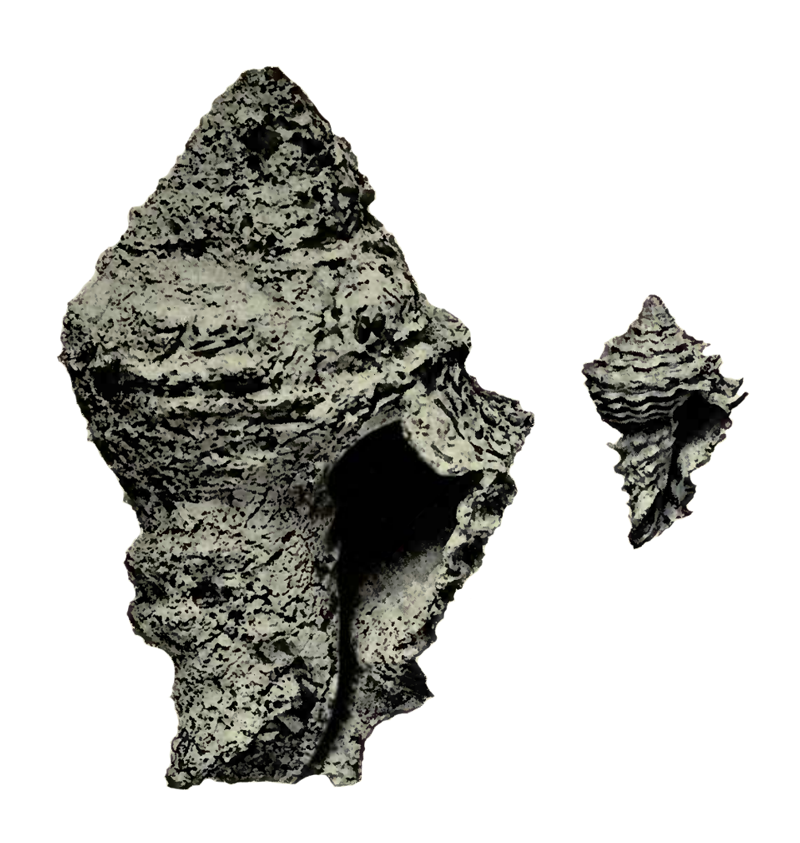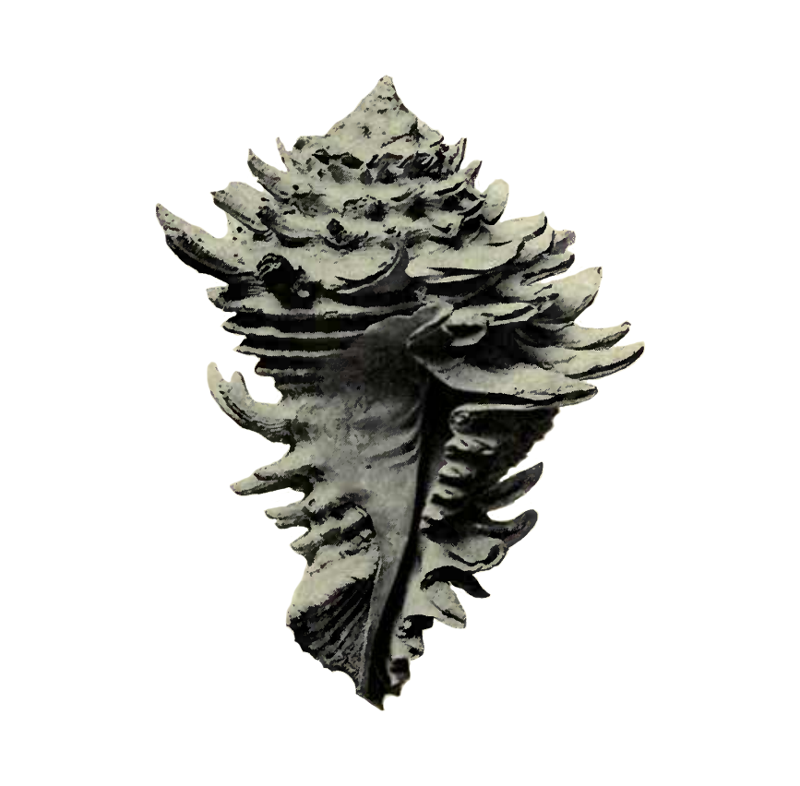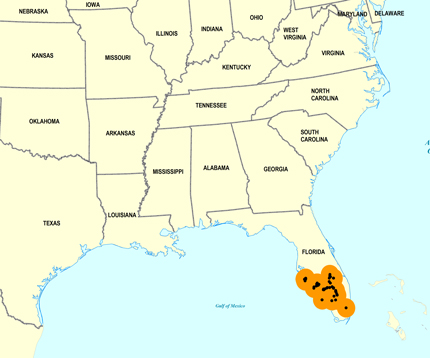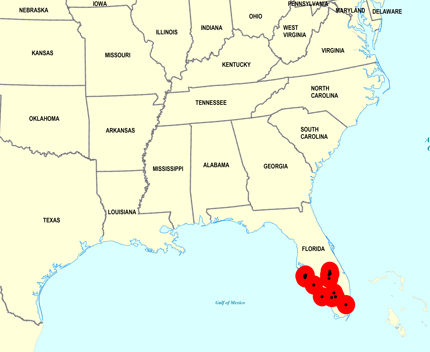
Hystrivasum horridum
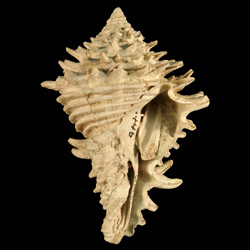
- Phylum: Mollusca
- Class: Gastropoda
- Order: Neogastropoda
- Family: Turbinellidae
- Genus: Hystrivasum
- Species: Hystrivasum horridum (Heilprin, 1886)
- Common Name: Rough or shaggy vase
Geological Range
Late Pliocene to Middle Pleistocene; Extinct.
Paleogeographic Distribution
Southern Florida.
Remarks
Original Description (from Heilprin, 1887, p. 75):
"Shell ovate, thick, ventricose, with the greatest width at about the middle; spire elevated, about one-fourth the length of the shell, and consisting of nodulose volutions.
Body-whorl strongly angulated on the shoulder - the angulation being at an angle of about 45 degrees to the outer wall - and probably prominently coronated with foliaceous or lamellar tubercles; surface, as well as that of the rest of the shell, profoundly grooved, with about eight sharply elevated revolving ridges below the shoulder angulation, the sixth and seventh from the top most prominent, and separated from each other by a space equal to two of the other interspaces; sutural line somewhat impressed, and bordered inferiorly by a lamellar ridge; aperture produced posteriorly into a short canal, somewhat more than one-half the length of the shell.
Length of imperfect specimen, lacking probably a full half-inch, about five and a half inches; width, three and a half inches.
Caloosahatchie, in the banks below Fort Thompson.
We obtained but a single adult specimen of this large Vasum, which apparently exceeds all other species of the genus in size. Unfortunately, its imperfect condition prevents the absolute determination of all its characters, but sufficient remains to indicate that it is a clearly-defined species. There are but few traces of the coronating tubercles left, but I think there can be no doubt, seeing the acute angulation of the shoulder, and the character of the spines in the young shell, that the tubercles were squamose, as in the East Asiatic V. imperialis and not of the typical blunt type seen in our southern V. muricatum. From the latter, apart from the character just indicated, the Florida fossil differs in its less turbinate form, the greater length of its spire, the smaller number and much greater prominence of its revolving ridges, and in the deficiency of its columellar plaits. The shoulders of the whorls are also much less depressed than in the recent species, rising at a considerable angle instead of being nearly flat.
In the sum of its characters the Florida fossil appears to be most closely related to Vasum imperialis, but unfortunately this assumption is based solely upon an examination of the figures and description of that form, the collections of the Academy of Natural Sciences, otherwise so rich in the department of conchology, being deficient in the species."
To access this description in its original formatting through Google Books, click here.
Original Description (from Heilprin, 1887, p. 132):
"Having received a number of perfect specimens of this beautiful species, I am now able to supplement and complete the description given on page 75 of this report (Fig. 6).
Shell turbinate, thick, with the greatest width at about one-third the distance from the apex to the base; spire moderately elevated, of about 6 to 7 whorls, most of which are doubly coronated or calcitrapated by prominent lamellar or flattened spurs; the spurs regularly increasing in size, with the apices turned slightly backward.
Body-whorl strongly angulated on the shoulder, beautifully coronated, and crossed by about eight prominent revolving ridges, the four immediately following the shoulder coronation nearly equal, scaly, the sixth and seventh, more particularly, carrying long lamellar spines or tubercles, those of the sixth row indexed upward.
Columellar plaits three, the uppermost by far the most prominent; aperture about two-thirds the length of shell, flexuous inferiorly; umbilicus long and broad."
To access this description in its original formatting through Google Books, click here.
Stratigraphic Occurrences
- Middle Pleistocene
- Bermont Formation (S. FL)
- Early Pleistocene
- Caloosahatchee Formation (S. FL)
- Late Pliocene
- Tamiami Formation (Pinecrest Beds) (S. FL)
